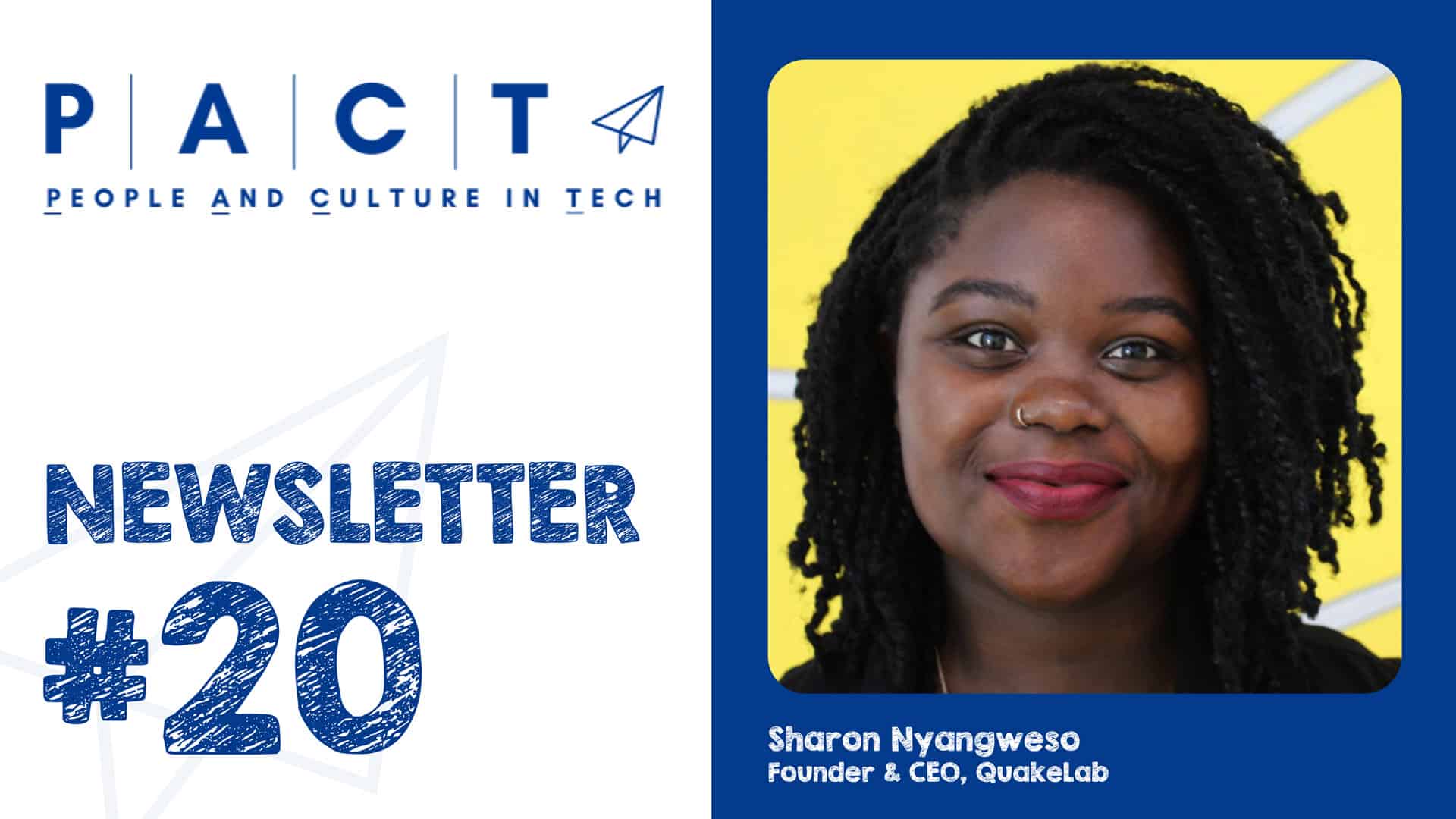Behaviour Change is Easy (and Other Myths about Diversity, Equity, and Inclusion at Work)
Stefan Palios

I don’t think any founder will tell you they don’t want an inclusive workplace where all employees can do their best work. Unfortunately though, intent is only half the battle. When it comes to diversity, equity, and inclusion (DEI) at work, we often think in terms of training and behaviour change. Speaking with Sharon Nyangweso, founder and CEO of QuakeLab, she explained why behaviour change being easy is a myth when it comes to DEI work - and what leaders should do instead.
Key takeaways:
- Behaviour change training, like unconscious bias training, can be helpful but it is long-term work.
- Leaders should look to change processes and structures, since those inform behaviour in a business context.
- Leaders set the structures for behaviour at work in all contexts, giving employees a process to opt-in, ask questions, and improve over time.
SuccessFinder empowers HR teams with in-depth behavioral insights for predictive hiring and talent management. We’re obsessed with helping individuals and organizations achieve their full potential.
Be sure to follow along on LinkedIn for content you don’t want to miss!
If you’ve ever been invited to unconscious bias training, you’ve probably groaned about it or heard the groans of coworkers. Despite a lot of evidence suggesting these kinds of one-off trainings don’t really work, they are still the go-to for a lot of companies that operate from a quick-fix mindset.
For Sharon Nyangweso, founder and CEO of Quake Lab,, the question is not whether bias training works or not. Instead, it’s about building structures that naturally encourage the inclusive actions you want to see. Speaking with PACT news, Sharon explained why founders need to stop trying to change people’s behaviours to “make” them more inclusive and instead focus on evolving processes and systems.
Diversity, equity, and inclusion (DEI) is not the problem
For any founder that wants a more inclusive workplace - or at least wants the innovation and revenue benefits of a diverse and inclusive business - Sharon’s first piece of advice is to realize that DEI is not a problem to be solved. It’s a method of solving a deeper problem. And those problems are not caused by surface-level backroom meetings.
“Gender pay gaps don’t happen because a group of men say ‘let’s make sure women don’t get money’,” said Sharon.
When Sharon works with clients who want to build more inclusion into their work environment, she takes a “where there’s smoke, there’s fire” approach.
For example, Sharon will often assess the following when working with clients:
- Recruitment processes: Are you sourcing from diverse talent pools, both in terms of visual identity and deeper lived experience?
- Onboarding: Are you making it easy for employees to start working for you, levelling the playing field for all new hires?
- Capacity building: How easy do you make it for employees to progress and level up within your organization?
- Performance management: Are you relying on gut feelings and networking to give helpful feedback, or do you have objective performance-based targets for specific roles?
Despite this being a more useful way to approach DEI compared to one-off unconscious bias training sessions, Sharon said a lot of leaders are hesitant to take this path for two reasons: First, it’s a lot of work and could uncover things that make people deeply uncomfortable in the short-term. And second, it’s not as sexy as posting pictures to the company Instagram about the amazing training you just went through.

Ask who you serve
A big part of Sharon’s work is getting clients who are asking for a quick solution - such as a training program - to figure out their underlying problems first. When doing this work, Sharon asks clients to consider who they are serving with their proposed solution.
For example, unconscious bias training for executives. While it’s often presented as helpful to the whole company, Sharon said it’s really only benefitting senior level employees at that moment. It might trickle down later, but the core expense, energy, and focus is on some of the most privileged people in the organization.
“You need to think about who you’re serving with an equity lens,” said Sharon. “An executive retreat to learn about diversity is basically giving privileged people in your organization - executives - the luxury of paid time to learn while asking the most marginalized people to wait a little longer for the things they need.”
When you ask who you serve, you start to uncover more of what a true problem might be because it shows where resources are concentrated. From there, Sharon said you can look at where resources are not being concentrated and likely identify the real problems or challenges to focus on.
Sharon also said this lens of asking who you serve helps to break down the invisible structures our working world has operated on for over a century.
“Many of the baselines we operate from in the corporate world were built for a very limited group of people,” said Sharon. “That group is no longer the only group working for or with you. Asking who you serve helps to identify whose needs aren’t being met, which is the first step in solution building.”

Leaders: change process, not behaviour
There’s often another issue that arises in DEI conversations: that “baby steps” aren’t enough and we need big action. While Sharon agrees big action is critical, she likes the additive nature of “baby steps,” provided they are consistent.
“Consistent, incremental work is a good litmus test for how effective the work will be over time,” said Sharon. “Knowing you need to take consistent steps means you will likely do the work longer versus someone who wants a big-bang solution.”
With that in mind, Sharon said the most impactful thing any leader can do is change processes.
“Behaviour change work, like unconscious bias training, is important,” said Sharon. “But it’s also incredibly difficult, long-term work. And most businesses should do this work, but they also need to be realistic on what they can achieve if they don’t have the capacity or environment to do this fully.”
To get a “quick fix,” Sharon advises looking at processes because it’s easier to see if someone is following a process. She tells clients to think about it like an office set up.
“Let’s say you set up an office with a desk, chair, picture on the wall, and window,” said Sharon. “Employees can personalize their space, adding family photos or using a standing versus sitting desk. But if they start breaking the windows and destroying the computer, they probably aren’t a fit for your workplace.”
An inclusion policy is similar. It’s not forcing people to act a certain way, but instead dictating how all employees need to act in your workspace. This should be backed up by an explanation of why the changes are valuable to the company, the research that backs them up, and a channel for employees to ask questions to better understand the policies, just like any corporate change. However, it also follows a “disagree and commit” methodology where questioning the policies is about better understanding how to follow them, not questioning their existence.
“Behaviour is informed by structures,” said Sharon. “You set up your workplace’s structures to set the ground rules, and people can choose to either opt-in or opt-out.”
To learn more or to meet Sharon, she will be a keynote speaker at the Western Edition of the Tech Talent North Conference at the Vancouver Convention Centre on June 8th, 2022.
BACK









